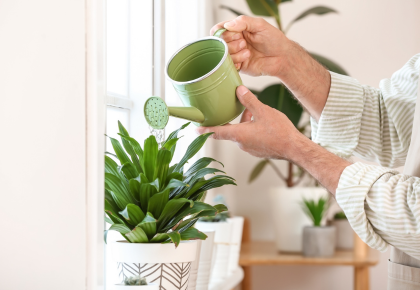Preventing issues in your community association when snowbirds fly the coop
As Illinoisians anticipate spending the next few months knee-deep in snow, it’s likely that some residents in your condo or homeowners association (HOA) are anticipating spending their winter in a warmer climate. Their departure might be difficult on friends and neighbors, but the impact on your association can be even more challenging if these “snowbirds” haven’t properly prepared for their time away.
The risks are certainly greater in condominiums and townhomes where units share common walls. However, issues that occur because a single-family home is vacant can also lead to problems in other parts of the community. And no matter what kind of home is left vacant, damage that renders it unlivable is bad news for everyone’s property values.
How your association board can help prevent issues
Your association board can help to prevent potential problems by providing a list of steps that snowbirds should follow before they leave. Since you may not be aware of all the residents who plan to be away for an extended period, it’s a good idea to send out this list to everyone in the community. A professional community association management company can be a big help in getting the word out effectively.
 Here are the 10 items you should include in your snowbirds checklist:
Here are the 10 items you should include in your snowbirds checklist:
-
Take care of preventive maintenance
-
Stop, change, continue, or start services
-
Take measures to deter pests
-
Set your thermostat to 65°F
-
Unplug your appliances
-
Prevent intruders
-
Verify insurance coverage
-
Arrange home watch
-
Inform your board or community association manager
-
Keep in touch
Read on as we break down each of these important steps.
1. Take care of preventative maintenance
The kind of units in your association will determine what kind of maintenance may be required. For example, homeowners may need to:
-
Trim potentially hazardous branches
-
Inspect and make any necessary roof repairs
-
Check heating systems
-
Clean out gutters
-
Install storm windows
-
Remove and/or cover outdoor furniture
-
Cover outdoor plants
-
Repair holes, weather stripping and windows
-
Completely close all windows and doors
-
Insulate exposed pipes
2. Arrange to stop, change, continue or start services
Residents should discontinue services such as newspaper delivery while they are gone and should have postal mail forwarded to their winter home. They should also verify that needed services, such as fuel delivery, will continue during their absence. If snow removal is the responsibility of individual homeowners, make sure that they make arrangements in advance to have someone plow or shovel after each snowstorm.
3. Take measures to deter pests
Rodents and insects are all too happy to make themselves at home during a resident’s long absence. These critters can quickly become a nuisance for other residents, too. Encourage departing homeowners to:
-
Remove perishables and open containers of food
-
Discard trash and clean trash cans
-
Store dry goods in sealed containers
-
Vacuum floors and clean countertops to remove crumbs and other spills
-
Store linens in boxes and place cedar in closets and drawers
-
Close fireplace flues
4. Set your thermostat to 65 degrees
Robert Meyer, director of engineering services at FirstService Residential, says that one of the biggest issues his company sees with homeowners who go away is that they either turn off their heat entirely or they turn it down too low. “They might lower the thermostat to 50 degrees thinking that is well above freezing,” he says, “but that’s only at the point where the thermostat is measuring the temperature.”
He explains that the temperature in other areas of the home – such as in a wall, a ceiling or an attic – may actually dip below freezing, especially during a cold snap. This can lead to serious flooding problems if pipes freeze and burst.
5. Unplug appliances
Items that can pose a fire hazard, such as toasters, computers, televisions and microwaves, should be unplugged during a long absence. However, it’s generally not a good idea to shut off the power entirely. Meyer warns that residents often don’t realize that their heating system has components that depend on electricity even if they don’t use electric heat. For example, in a home that has its own furnace, electricity is needed to keep the furnace fan functioning. “Without the furnace fan running, a unit can freeze,” he says.
6. Prevent intruders
Timers that are set to turn on lights can help make a home appear occupied. In some cases, it may also make sense for homeowners to install motion detection lights, as well as an alarm system that enables home monitoring from a smart phone.
7. Verify insurance coverage
For their own protection, as well as for the protection of others living in the HOA or condo association, it’s important for residents who will be away to check that their homeowners insurance provides the right coverage and that their premiums are paid up.
 8. Arrange home watch
8. Arrange home watch
The best way for absent residents to ensure that their homes remain safe and problem-free is to have a family member, friend or trusted neighbor check in periodically. Besides taking care of minor upkeep, like watering plants, a regular visitor will quickly notice any problems and be able to alert the homeowner.
9. Inform your board or community association manager
Surprisingly, many people fail to inform their board or community association manager when they plan to be gone for an extended period of time. It’s important for the board to be aware of absences and to have a forwarding address where a resident can receive important letters and notices.
10. Keep in touch
 It’s easy for association members who are away to feel left out of activities back home. A community website that is available anytime, from anywhere, can go a long way in helping them stay informed about association business, as well as social events. A good community association management software program will also enable board members, residents and the association manager to reach out to each other directly – another way in which out-of-town homeowners can stay connected with the community.
It’s easy for association members who are away to feel left out of activities back home. A community website that is available anytime, from anywhere, can go a long way in helping them stay informed about association business, as well as social events. A good community association management software program will also enable board members, residents and the association manager to reach out to each other directly – another way in which out-of-town homeowners can stay connected with the community.
Preventive measures keep issues at bay
Keeping up with the community snowbirds may not seem like something that should be the responsibility of the board. However, sending out an annual reminder of what snowbirds should do before they leave for a warmer climate is an easy way to help keep your community safe from avoidable risks.